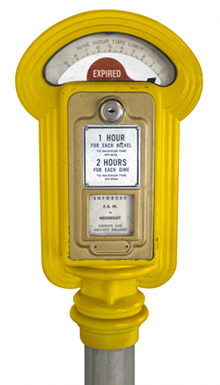Keep your workload in check
Datum: 2013-03-20 10:19

If you have a tendency to agree to do too many things and are later sorry you did since you end up having too much to do, you are not alone.
But not to worry.
If you are one of those who frequently experience that they have so much to do and so many deadlines that they have to work overtime several days a week, you are in good company with many people I meet in my work.
Maybe you will find today’s post helpful.
Make the invisible visible
As long as you don’t only work when you are in a meeting, your week is full of work needing to be done long before the calendar is entirely full visually.
If we only look in our calendar to get an idea of how much we have to do, the time you require to do tasks on your own remain unseen, which can easily lead to that we accept invitations to meetings and activities as long as there is free space in the calendar.
But, if you make the “on-your-own”-time visible and clear to yourself as well, you will make the idea of how much time you actually have got to work with much more clear, and can thereafter make better, more informed decisions when you receive an offer to do something a certain date or when you receive an invitation to attend a meeting.
Clarifying makes it easier to make the right decision
For this very reason, you should make a plan over all the time during which you have already planned to work on tasks, be it specific or ongoing ones. You can for instance use Excel or some other form of spreadsheet to create an overview. This way you will quickly and easily see how much you actually have to do in the near future and how much time you then have over for new commitments.
Do this
- Look through your calendar for the coming year and look for any upcoming deadlines.
- If you haven’t done so already, make a list of all the projects you either run or participate in during the year.
- Create a spreadsheet listing the names of the projects and your deadlines in the column to the far left.
- Write the numbers of the weeks, 1 through 52, in the column B and onwards to the right.
- For every deadline, think about and estimate how much time you need to work towards meeting it every week, from now to the due-date.
- Enter the number of hours in the cell representing the relevant deadline and week in the spreadsheet.
- How much time do you need to spend every week on the different projects? Enter these hours as well for every week you are working on the project.
- Insert another row right under the row listing the numbers of the weeks. Create a formula here that sums up all the hours you will require to work on projects and deadlines for every week. Now you can see how much time you will need to work on ongoing commitments and hence how much time you actually have at your disposal for new ones.
- If you wish to make it explicitly clear to yourself, create and add a formula which automatically high-lights the number of the week in red when the number of hours your projects and deadlines require exceeds an appropriate number. I have chosen to have the spreadsheet signal when I have surpassed 30 hours of scheduled work since I count on needing approximately 10 hours to process e‑mails, do administrative tasks and deal with unforeseen events and tasks.
- If you want to, you can take it one step further and create a diagram of the scheduled hours of work per week so that you get a visual perception of how much you have to do.
So from now on, before you agree to something on the fly, consult with this representation of your available time and see if you really have time for a new commitment.
As soon as you add a few new hours to the spreadsheet, pay extra attention to if one or several week pass the limit you have set for your desired number of scheduled hours in a week. If it is high-lighted (or signals this to you in some other way), simply block out any apparently free time in the calendar for that week so that you aren’t tempted to add more meetings even though you in actuality don’t have time for them.
A better distribution is a better solution
If you are a step ahead of yourself and summarize the time you know you will be occupied with work every week on beforehand, it is much easier to plan ahead and be able to determine when a week is “full”. So even if you calendar has spaces where there are no meetings scheduled, it is much easier to determine that you actually do not have time for another meeting when someone suggests one, but it will have to wait until next week.
This more comprehensive approach to your time management gives you the control over your own planning rather than that you frequently experience having more to do in a day than you thought you would (and more than what is good for you).
What is your way?
How do you predict your workload? Leave a comment to let others know about your clever trick.




